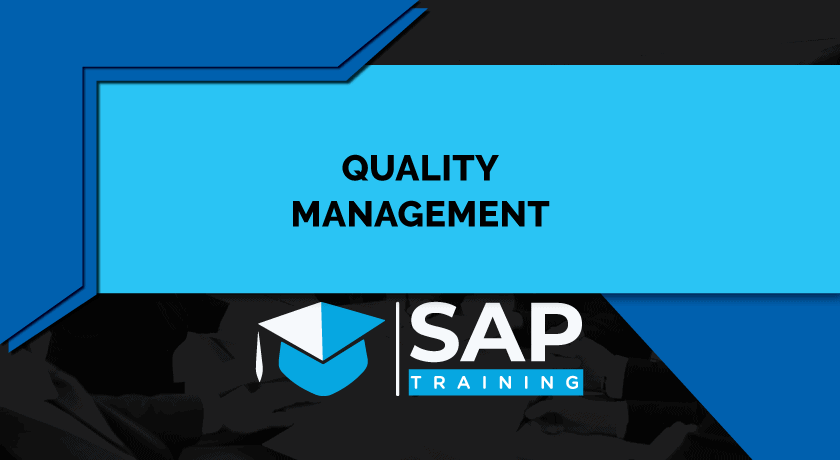Sure, I can provide an overview of the SAP QM (Quality Management) module and some basic training on its functionality.
Overview: The SAP QM module is an integral part of SAP ERP (Enterprise Resource Planning) and is used to manage quality throughout the supply chain process. It helps in ensuring that all the products or services produced meet the quality standards set by the company. The module supports various processes, including quality planning, inspection, notification, and control.
Training:
- Quality Planning: This module allows you to define quality requirements, set up quality control plans, and create inspection lots. To create a quality control plan, follow these steps:
a. Enter the transaction code QS21. b. Select the type of inspection plan. c. Enter the plan details, including description and validity dates. d. Create characteristic specifications, and define the sampling procedures and the inspection methods. e. Save the plan.
- Quality Inspection: This module enables you to perform inspections, record results, and process results according to the quality control plan. To perform an inspection, follow these steps:
a. Enter the transaction code QA32. b. Enter the inspection lot number. c. Enter the inspection results, and record defects if any. d. Save the inspection lot.
- Quality Notification: This module allows you to report problems or issues related to quality, and to initiate a quality inspection. To create a quality notification, follow these steps:
a. Enter the transaction code QM01. b. Enter the notification type, priority, and description. c. Enter the affected material, vendor, and plant information. d. Save the notification.
- Quality Control: This module allows you to manage quality problems, take corrective action, and prevent problems from recurring. To manage quality control, follow these steps:
a. Enter the transaction code QM02. b. Search for the quality notification. c. Review the notification details, and initiate an inspection if necessary. d. Record the results of the inspection, and perform any necessary corrective action. e. Save the notification.
These are some of the basic functionalities of the SAP QM module. There are many more features that you can explore, such as vendor evaluations, quality certificates, and audits. To learn more about the SAP QM module, you can take online courses, read SAP documentation, or join SAP user groups.
What is Cloud Computing? Definition, Explain with Examples
Cloud computing is a model of computing that enables on-demand access to a shared pool of computing resources, including servers, storage, applications, and services, over the internet. In simple terms, cloud computing is the delivery of computing services over the internet.
Cloud computing services are typically offered by third-party providers, who own and maintain the infrastructure, hardware, and software required to provide these services. Users can access these services using any internet-connected device, such as a laptop, desktop, or mobile phone. The three main types of cloud computing services are:
- Infrastructure as a Service (IaaS): This is the most basic form of cloud computing, where the cloud provider offers virtualized computing resources such as servers, storage, and network infrastructure. The customer is responsible for managing the operating system, applications, and data.
Examples: Amazon Web Services (AWS), Microsoft Azure, Google Cloud Platform (GCP), and DigitalOcean.
- Platform as a Service (PaaS): In this type of cloud computing, the cloud provider offers a platform for customers to build, deploy, and manage their own applications. The provider manages the infrastructure and operating system, and the customer is responsible for managing the applications and data.
Examples: Heroku, Google App Engine, and Microsoft Azure App Service.
- Software as a Service (SaaS): This is the most advanced form of cloud computing, where the cloud provider offers fully managed applications that can be accessed over the internet. The customer does not need to manage the infrastructure, operating system, or application.
Examples: Google Workspace (formerly G Suite), Microsoft Office 365, Salesforce, and Dropbox.
Cloud computing offers many benefits, including scalability, cost-efficiency, reliability, flexibility, and security. It has become an essential component of modern IT infrastructure and is widely used across industries for a variety of applications, such as data storage and processing, web hosting, application development, and collaboration.
Prerequisites of SAP Quality Management Course
To take an SAP Quality Management (QM) course, there are several prerequisites that you should meet:
- Basic Understanding of SAP ERP: You should have a basic understanding of SAP ERP and its various modules, including MM (Materials Management) and PP (Production Planning). This will help you understand how the QM module integrates with other modules and how it fits into the overall business process.
- Knowledge of Quality Management Principles: You should have a basic understanding of quality management principles, including ISO standards, quality assurance, quality control, and continuous improvement. This will help you understand the key concepts and terminology used in the QM module.
- Basic Computer Skills: You should have basic computer skills, including the ability to use a computer, browse the internet, and use common software applications such as Microsoft Word, Excel, and PowerPoint.
- Familiarity with Business Processes: You should have a basic understanding of business processes, including procurement, production, sales, and logistics. This will help you understand how the QM module is used to manage quality throughout the supply chain process.
- Technical Background: Although not mandatory, a technical background in SAP ABAP (Advanced Business Application Programming) or other programming languages can be helpful in understanding the technical aspects of the QM module.
In summary, to take an SAP QM course, you should have a basic understanding of SAP ERP, quality management principles, basic computer skills, familiarity with business processes, and ideally, a technical background in SAP ABAP or other programming languages.







